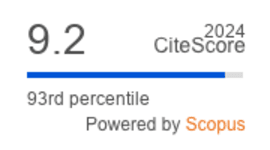COVID-19: An Update on the Latest Therapeutic Agents
DOI:
https://doi.org/10.36877/pmmb.0000329Abstract
The COVID-19 pandemic has plagued the world for over three years since discovering the causative virus, SARS-CoV-2, in China. The rampant spread of the virus led to the loss of livelihoods of millions across the globe. This public health emergency prompted the rapid development of vaccines and treatments to fight against viral infection. Vaccines against the viral infection started rolling out in late 2020, and the distribution of the vaccines worldwide managed to reduce the symptoms of COVID-19 and prevent outbreaks in local communities. However, COVID-19 infections are still prevalent, with patients suffering from severe symptoms which require oxygen support or mechanical ventilation. Thus, therapeutic agents for COVID-19 play a significant role in reducing the risk of disease progression into severe disease and improving hospitalized patients' clinical outcomes. Existing drugs such as remdesivir, molnupiravir, baricitinib, anakinra, and tocilizumab have been repurposed to treat COVID-19 earlier during the pandemic to meet the urgent demand for treatment. There are also novel antiviral and immunomodulating treatments (nirmatrelvir plus ritonavir, ensitrelvir, regdanvimab, sotrovimab, and vilobelimab) that were developed during the pandemic to fight against COVID-19 infections. These therapeutic agents have been reported to be effective and safe for use to treat COVID-19 infections of different severity. Nevertheless, continuous surveillance is imperative in ensuring that these treatment methods maintain efficacy and safety profiles in treating COVID-19 caused by different variants of the virus.
Downloads
Published
How to Cite
Issue
Section
License
Copyright (c) 2023 Ke-Yan Loo, Loh Teng-Hern Tan, Jodi Woan-Fei Law, Kar-Wai Hong, Kok-Gan Chan, Vengadesh Letchumanan

This work is licensed under a Creative Commons Attribution-NonCommercial 4.0 International License.
Author(s) shall retain the copyright of their work and grant the Journal/Publisher right for the first publication with the work simultaneously licensed under:
Creative Commons Attribution-NonCommercial 4.0 International (CC BY-NC 4.0). This license allows for the copying, distribution and transmission of the work, provided the correct attribution of the original creator is stated. Adaptation and remixing are also permitted.

This broad license intends to facilitate free access to, as well as the unrestricted reuse of, original works of all types for non-commercial purposes.
The author(s) permits HH Publisher to publish this article that has not been submitted elsewhere.



.png)

.jpg)
